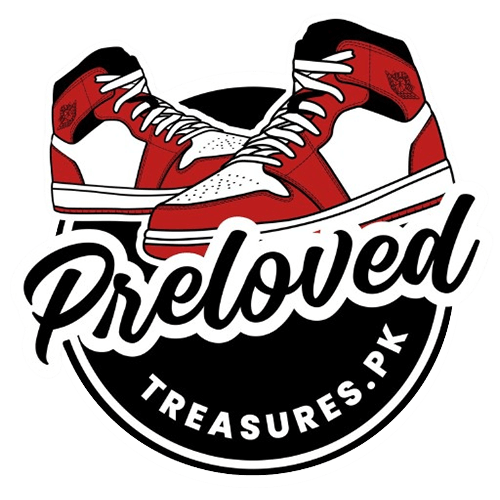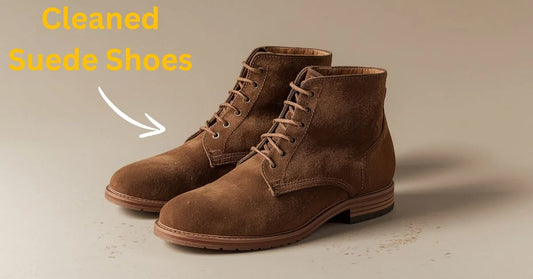
Football Shoes
Haris RiazShare
Football shoes, also known as cleats or soccer shoes in North America, are worn when playing soccer. The ones made for grass fields have studs on the bottom to help with grip. Football shoes have evolved from simple designs to high-tech gear with lots of research, development, sponsorship and marketing. Modern football shoes don't cover the ankle and look more like sneakers.
Rugby players wear a variation of these shoes, known as rugby shoes, which have design features specific to rugby. However, soccer shoes are sometimes used by rugby players in certain positions.
While primarily associated with soccer and rugby these shoes are also used in other grass sports like touch football, lacrosse, hurling, shinty, quadball and even tug of war.
History
In the 19th century, various forms of football became popular in Great Britain. Players wore their heavy work shoes which had steel toe-caps, long laces and high tops. These shoes often had metal studs or tacks on the bottom for better grip and stability. Later in the century, the first football-specific shoes were made from thick leather and covered the ankle for protection. These early shoes were heavy weighing 500 grams and doubling in weight when wet.
Between 1900 and 1940, football shoes remained basic in design. This continued through the inter-war years even as famous brands like Gola, Hummel and Valsport gained popularity.
After World War II, football shoes designs changed significantly. South American players introduced lighter and more flexible shoes which improved control and kicking power. In 1954, Adi Dassler introduced screw-in studs giving the German team an advantage in a rainy World Cup final. This claim is disputed by his brother, Rudolf Dassler, founder of Puma.
In the 1960s, football shoes became lower cut, lighter and more flexible allowing players to move faster and change direction quickly. Brands like Mitre, Joma and Asics entered the market. Adidas became the top manufacturer with 75% of players at the 1966 FIFA World Cup wearing their shoes.
The 1970s saw much advancement including lighter shoes and various colors. Shoes sponsorship became more common. Adidas led the market introducing new technologies like heel padding.
In 1979, Adidas released the Copa Mundial the best-selling shoes of all time. Natural leathers such as kangaroo, calfskin and full-grain leather became popular. Diadora also entered the market.
The 1980s continued the technological developments of the previous decade. New brands like Umbro, Lotto and Kelme joined the market.
In the 1990s, new sole designs improved player balance. The Adidas Predator, designed by Craig Johnston, was released in 1994 and was an instant success. Brands like Mizuno, Reebok, Uhlsport and Nike began making football shoes. Nike's first shoes, the Nike Mercurial Vapor, made a big impact in 1998 when Ronaldo wore them at the FIFA World Cup.
In the early 2000s, laser technology produced the first fully customized football shoes in 2006. The first laceless shoes, the Lotto Zhero Gravity, was also released in 2006. Laceless shoes became very popular in the late 2010s.
With the modern game becoming faster manufacturers introduced lighter shoes made from new materials. Shoes customization became more common with the rise of the internet. Adidas released the Ace PureControl laceless shoes in 2016, making laceless shoes more popular. Other companies like Umbro, New Balance and Nike also released their versions. Laceless shoes offered better lockdown and lateral stability, with a knitted upper for improved ball control.
Material for Football Shoes
Football shoes are important for players providing traction and preventing slipping. They can be made from various materials including rubber, synthetic materials like nylon and polyurethane and leather.
"Are you from Pk? Step Up Your Game with Men's Football Shoes in Pakistan"
The most popular material is kangaroo leather, known for its unique texture, durability, breathability and lightweight properties making it ideal for agile players. While many players prefer leather others opt for synthetic or plastic materials due to their durability and lower cost.
Different Styles for Different Surfaces
Football shoes come in different styles and stud configurations based on the type of surface, the sport and the player's position.
- For hard pitches, amateur players might wear turf football shoes (TF) or plastic-stud shoes also known as "moulded sole" shoes. For indoor football, companies have developed indoor court (IC) shoes with rubber soles designed to maximize grip on indoor floors.
- For playing on artificial grass or turf some players use regular firm ground (FG) football shoes. However, wearing these on turf can wear them out quickly so brands like Nike have created shoes specifically for artificial grass (AG) featuring smaller circular studs. For well-grassed or muddy fields, soft ground (SG) shoes are recommended. Some players use shoes with screw-in studs on their non-dominant foot for grip and shoes with short rubber or plastic studs on their dominant foot for accuracy. Most players, however, prefer the same configuration for both shoes.
- Moulded soles with specially designed blades are meant to maximize grip and minimize ankle injury. However, these "bladed" shoes have faced criticism for causing serious injuries. Manchester United, for example has banned players from wearing bladed shoes after repeated injuries to players like Wayne Rooney and David Beckham.
Recently, there have been concerns about female footballers wearing men's shoes due to differences in foot shape and weight distribution. Studies show that women tend to get injured more often when playing in unisex football shoes. As a women, you can select your next pair from our prelovedtreasures.pk women shoes collection!
Football Markets & Brands
Originally, football shoes were only available in black. Nowadays, they come in a variety of colors like blue, green, red, white, yellow, silver, gold and even pink. Major brands like Nike, Adidas and Puma have dominated the market with high sales.
Nike's popular models include the Phantom VNM, Phantom VSN, Tiempos and the Mercurial Vapor famously worn by Cristiano Ronaldo. Adidas, a German company, is known for the Predator range worn by David Beckham, Gary Neville and Steven Gerrard as well as the long-lasting Copa Mundial. During the 2006 FIFA World Cup, the entire German national team wore Adidas shoes. Puma, another German brand, offers flagship shoes like the King Platinum, Future and One worn by players like Sergio Agüero, Marco Reus, Cesc Fàbregas and Antoine Griezmann. The Puma King shoes have also been worn by legends like Pelé, Eusébio, Johan Cruyff and Diego Maradona.
Nike and Adidas are the most successful brands today, popular among professional footballers. Nike endorses players like Ronaldinho, Wayne Rooney, Cristiano Ronaldo, Wesley Sneijder and Zlatan Ibrahimović.
Adidas has a history of providing football shoes to the Germany national team since the 1954 World Cup and has signed stars like Zinedine Zidane, Frank Lampard, Lionel Messi, David Villa and Steven Gerrard. Puma has also made its mark by signing big names like Antoine Griezmann, Marco Reus, Gianluigi Buffon, David Silva, Cesc Fàbregas, Romelu Lukaku, Mario Balotelli, Neymar and Luis Suárez.
We have a vast collection of Original Adidas Shoes, Shop yours now!
Biggest Shoes Deals in the World of Football
|
Player
|
Brand
|
Figure (per year)
|
|
Neymar
|
Puma
|
£23 million
|
|
Erling Haaland
|
Nike
|
£20 million
|
|
Lionel Messi
|
Adidas
|
£18 million
|
|
Cristiano Ronaldo
|
Nike
|
£15 million
|
|
Kylian Mbappe
|
Nike
|
£14 million
|
|
Jack Grealish
|
Puma
|
£10 million
|
|
Mario Balotelli
|
Puma
|
£5 million
|
|
Antoine Griezmann
|
Puma
|
£3.5 million
|
|
Paul Pogba
|
Adidas
|
£3 million
|
|
Marco Verratti
|
Nike
|
£2.5 million
|
|
Mohamed Salah
|
Adidas
|
£2.5 million
|
Customization
Many players personalize their football shoes to improve their look and make them easily identifiable in the club dressing room. It's now common to have shoes personalized with a name, initials, number or club logo. Famous players like Lionel Messi, Cristiano Ronaldo and Neymar often add their number, their children's names or a flag to their shoes.
Retailers like Nike, Adidas and Puma offer various options and colors for personalizing football shoes using embroidery machinery.
Customization isn't just for appearance, it's also done to make shoes more comfortable. Adjustments like shortening the tongue, trimming the heel, rearranging studs or using specific leather have become common to enhance comfort. For example English player Declan Rice has made over 25 modifications to his AdiPure 11 Pro shoes.
"Football shoes are not just about the game, infact, they are about personal expression and performance. The right pair can make a significant difference on the field. Get your shoes from Preloved Treasures"



